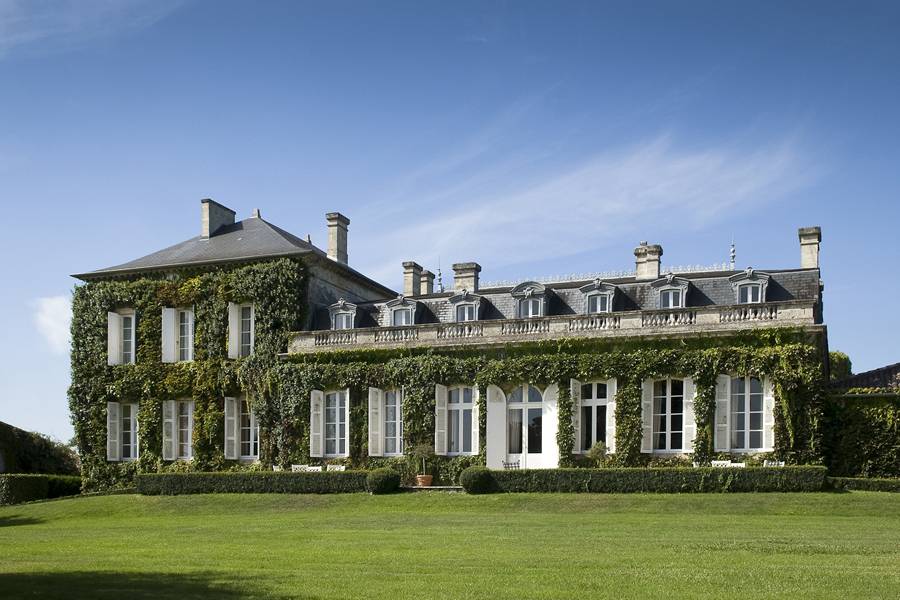- Colour Red
- Producer Château Talbot
- Region St Julien
- Drinking 2015 - 2030
- Case size 12x75cl
- Available Now
2000 - Ch Talbot 4ème Cru St Julien - 12x75cl
- Colour Red
- Producer Château Talbot
- Region St Julien
- Drinking 2015 - 2030
- Case size 12x75cl
- Available Now
Select pricing type
Need help? Call +44 (0)20 7793 7900 or email wine@goedhuiswaddesdon.com.
-
Goedhuis, April 2001
One of the best Talbots ever made, on a par with the 1982 and 1986.
-
Neal Martin, June 2021, Score: 88
The 2000 Talbot shows a bit of bricking on the rim. It’s somewhat rustic on the nose, displaying licorice-tinged black fruit, marmalade and furniture polish and just a little brettanomyces. A light underlying balsamic note filters through with time. The palate is medium-bodied, quite savory and powdery in texture, with dry-ish, grainy tannins and a spicy but slightly austere finish.
-
Neal Martin, December 2018, Score: 91
The 2000 Talbot is served in one of 1,000 “Sylvain Dubuisson” bottles, whereby the bottle is housed in a vessel that filters the wine. Deep in colour, it has a Burgundian bouquet with pastille-like raspberry and cranberry fruit laced with tobacco and cedar. With time in the glass it becomes more floral in style. The palate is medium-bodied and softer in texture than other millennial Left Bank wines. Dorset plum intermingles with boysenberry with a touch of vanilla, though it feels quite backward on the finish (redeemed by appealing smoothness.) Good length here and fine potential. Tasted at the centenary Château Talbot vertical at the property.
-
Robert Parker, June 2010, Score: 93
This was a strong performance (better than my original notes suggested) by the 2000 Talbot. Close to full maturity, it exhibits a dense ruby/plum/purple color in addition to a subtle herbaceousness intermixed with smoked meats, black currants, licorice, cedar, and foresty notes. Rich and full-bodied with light tannins, and a slightly richer, more savory, broader, deeper style than I remember, it should drink well for 10-15 years.
-
Robert Parker, April 2003, Score: 90
To my surprise, the in the bottle tastings revealed a supple, open-knit, surprisingly accessible and open-styled wine. Although not a blockbuster, this outstanding St.-Julien reveals admirable richness, a layered texture, sweet tannin, and abundant quantities of smoky cassis, licorice, herb, earth, and leather characteristics. With complex aromatics and splendid richness, it admirably blends power with elegance. Some tannin suggests 2-3 years of cellaring might be warranted, but drinking it now hardly seems like infanticide. Anticipated maturity: 2006-2020.
-
Jancis Robinson, April 2001, Score: 17-
Deep purple. Voluptuous nose. Very neat. Tannins at present a little tough and drying but well made and representative of the vintage. Needs considerable time.
-
Clive Coates, June 2001
70% Cabernet Sauvignon, 30% Merlot. For four years here they have not added the Cabernet Franc here, even this year when it was produced at 35 hl/ha. 57 hl/ha. 55% of the harvest in the grand vin. Fine colour. Profoundly rich on the nose. Very lovely cassis fruit. Fullish body. Ripe. Very good tannins. This has a lot of depth. Ripe, rich and posite at the end. Complex and positive.Finishes long. Very good plus. From 2010.
Producer
Château Talbot
A mark of the significant English influence in Bordeaux, Talbot was named after John Talbot, Earlof Shrewsbury, who fought gallantly but unsuccessfully against the French in Castillon in 1453. For many years, it was a twin to Gruaud Larose which also bore the Cordier label. However, since 1992 Jean Cordier exchanged his shares in Gruaud to take complete control of Talbot. It is now run by his daughter Nancy. Talbot has prod...Read more
A mark of the significant English influence in Bordeaux, Talbot was named after John Talbot, Earlof Shrewsbury, who fought gallantly but unsuccessfully against the French in Castillon in 1453. For many years, it was a twin to Gruaud Larose which also bore the Cordier label. However, since 1992 Jean Cordier exchanged his shares in Gruaud to take complete control of Talbot. It is now run by his daughter Nancy. Talbot has produced a continuous stream of excellent wines vintage after vintage.Read less

Region
St Julien
St Julien is like the middle child of the Médoc - not as assertive as Pauillac or as coquettish as Margaux. It lies firmly between the two more outspoken communes and as a result produces a blend of them both. St Julien's wines have often been sought out by aficionados for their balance and consistency, particularly in the UK. Yet due to its middle child nature, it can occasionally be overlooked globally and as a result underrated by those markets outside the UK. Despite the fact that it has no first growths, it has several second growths including Léoville Las Cases, Léoville Barton, Léoville Poyferré and Ducru Beaucaillou as well as the celebrated châteaux such as Talbot and Beychevelle.




